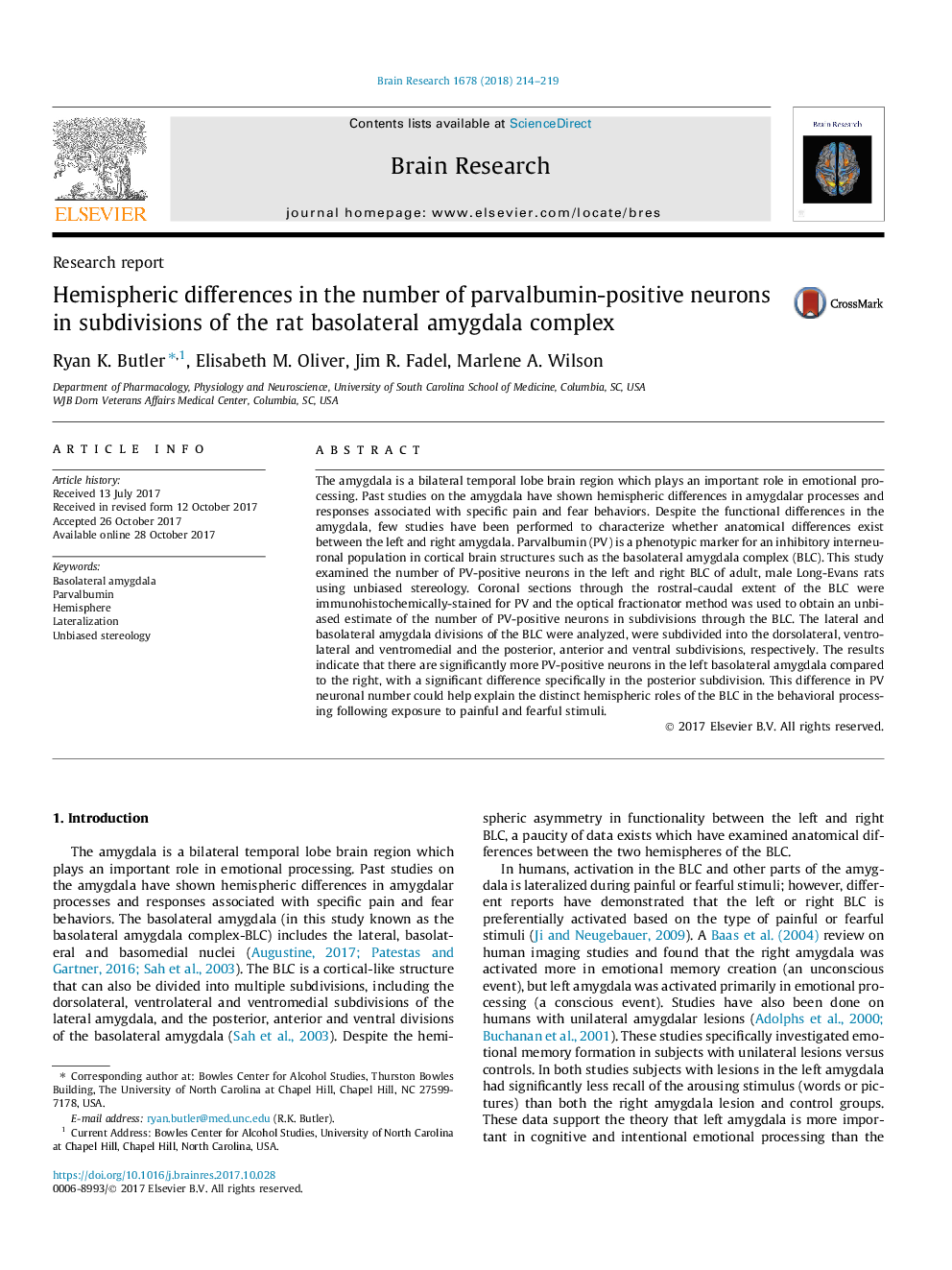| کد مقاله | کد نشریه | سال انتشار | مقاله انگلیسی | نسخه تمام متن |
|---|---|---|---|---|
| 8839965 | 1613767 | 2018 | 6 صفحه PDF | دانلود رایگان |
عنوان انگلیسی مقاله ISI
Hemispheric differences in the number of parvalbumin-positive neurons in subdivisions of the rat basolateral amygdala complex
ترجمه فارسی عنوان
تفاوت های نیم کره ای در تعداد نورون های پرولاوبومین مثبت در زیربخش های مجتمع آمیگدال رت
دانلود مقاله + سفارش ترجمه
دانلود مقاله ISI انگلیسی
رایگان برای ایرانیان
کلمات کلیدی
آمیگدالای ناحیه پشتی، پارافوبومین، نیمکره، واریز استریولوژی بی طرفانه،
موضوعات مرتبط
علوم زیستی و بیوفناوری
علم عصب شناسی
علوم اعصاب (عمومی)
چکیده انگلیسی
The amygdala is a bilateral temporal lobe brain region which plays an important role in emotional processing. Past studies on the amygdala have shown hemispheric differences in amygdalar processes and responses associated with specific pain and fear behaviors. Despite the functional differences in the amygdala, few studies have been performed to characterize whether anatomical differences exist between the left and right amygdala. Parvalbumin (PV) is a phenotypic marker for an inhibitory interneuronal population in cortical brain structures such as the basolateral amygdala complex (BLC). This study examined the number of PV-positive neurons in the left and right BLC of adult, male Long-Evans rats using unbiased stereology. Coronal sections through the rostral-caudal extent of the BLC were immunohistochemically-stained for PV and the optical fractionator method was used to obtain an unbiased estimate of the number of PV-positive neurons in subdivisions through the BLC. The lateral and basolateral amygdala divisions of the BLC were analyzed, were subdivided into the dorsolateral, ventrolateral and ventromedial and the posterior, anterior and ventral subdivisions, respectively. The results indicate that there are significantly more PV-positive neurons in the left basolateral amygdala compared to the right, with a significant difference specifically in the posterior subdivision. This difference in PV neuronal number could help explain the distinct hemispheric roles of the BLC in the behavioral processing following exposure to painful and fearful stimuli.
ناشر
Database: Elsevier - ScienceDirect (ساینس دایرکت)
Journal: Brain Research - Volume 1678, 1 January 2018, Pages 214-219
Journal: Brain Research - Volume 1678, 1 January 2018, Pages 214-219
نویسندگان
Ryan K. Butler, Elisabeth M. Oliver, Jim R. Fadel, Marlene A. Wilson,
